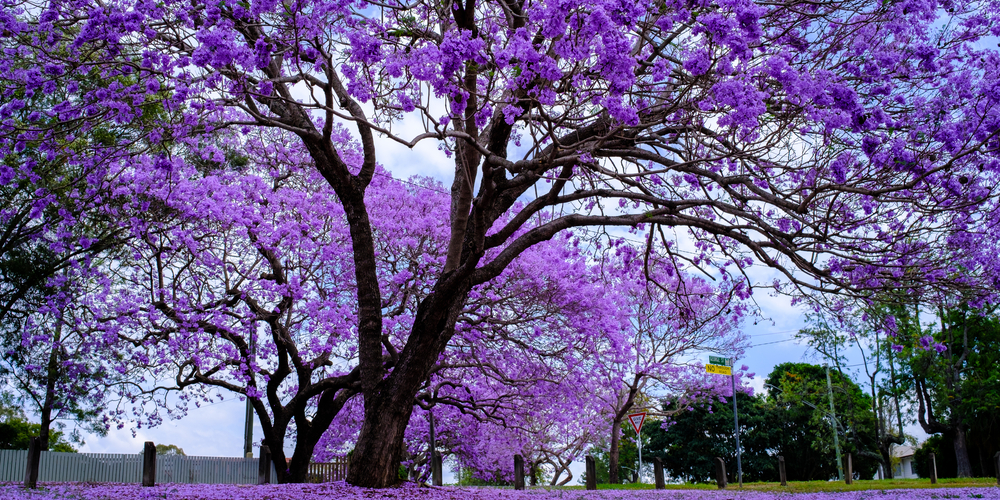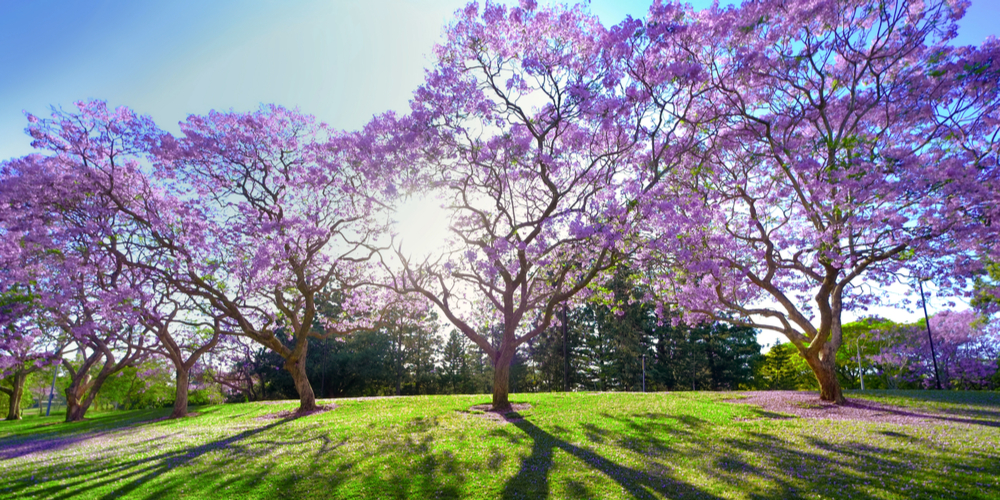Jacaranda trees are beautiful, flowering trees native to Central and South America. In Texas, they are most commonly found in the southern part of the state. While they can tolerate a wide range of soil and climate conditions, they prefer warm weather and well-drained sandy soil. Let’s look at how to grow and care for jacaranda trees in Texas.
Should you plant Jacaranda trees in Texas?

Jacaranda trees (Jacaranda mimosifolia) are popular for landscaping in southern Texas due to their striking purple flowers. They are relatively low-maintenance trees, but there are a few things to keep in mind if you choose to plant them in your yard.
- Jacaranda trees are fast-growing and can reach up to 60 feet tall. They should be planted in an area with plenty of room to grow.
- The trees have shallow roots that can damage sidewalks, driveways, and outbuildings if they are not planted far enough away from these structures.
- Jacaranda trees are deciduous, meaning they will lose their leaves in the winter months. This can be a plus or minus, depending on your personal preference. Some people find the bare branches to be unsightly, while others appreciate the winter interest that the trees provide. You’ll also have a lot of leaves to clear up.
- Check your USDA zone and consider growing the tree as a houseplant in colder areas.
If you live in Northern Texas, you may have problems growing Jacaranda trees. This area of the state is known to have clay-like soils, so you’ll need to add soil amendments before planting the tree.
Texas falls within USDA hardiness zone 6a to 9b, while it’s recommended that Jacaranda trees are grown in zones 9b through 11. In colder areas, where frost is likely, it may be better to grow a Jacaranda tree as a house plant.
How to care for a jacaranda tree in Texas?
Jacaranda trees are relatively easy to care for, but there are a few things you should keep in mind. Seedlings and young trees need to be watered regularly during the first year after planting. They also benefit from a layer of mulch around the tree’s base to help retain moisture.
Once established, jacaranda trees are drought-tolerant and only need to be watered occasionally. They should be fertilized once a year in the spring with a balanced fertilizer.
Pruning is not necessary for jacaranda trees, but you can trim them back if desired to help maintain the tree’s size, shape, and appearance. To do this, wait until the tree is dormant in the winter and then prune it back to the desired size.
The trees prefer well-drained sandy soil and grows best in the full sun.
Conclusion
Jacaranda trees are a beautiful addition to any landscape in Southern Texas. With their showy flowers and easy-care nature, they are sure to add beauty to your yard.
If you decide to plant jacaranda trees in your Texas landscape, give them plenty of space and care. With a little attention, they will thrive and add beauty to your property for many years to come.
